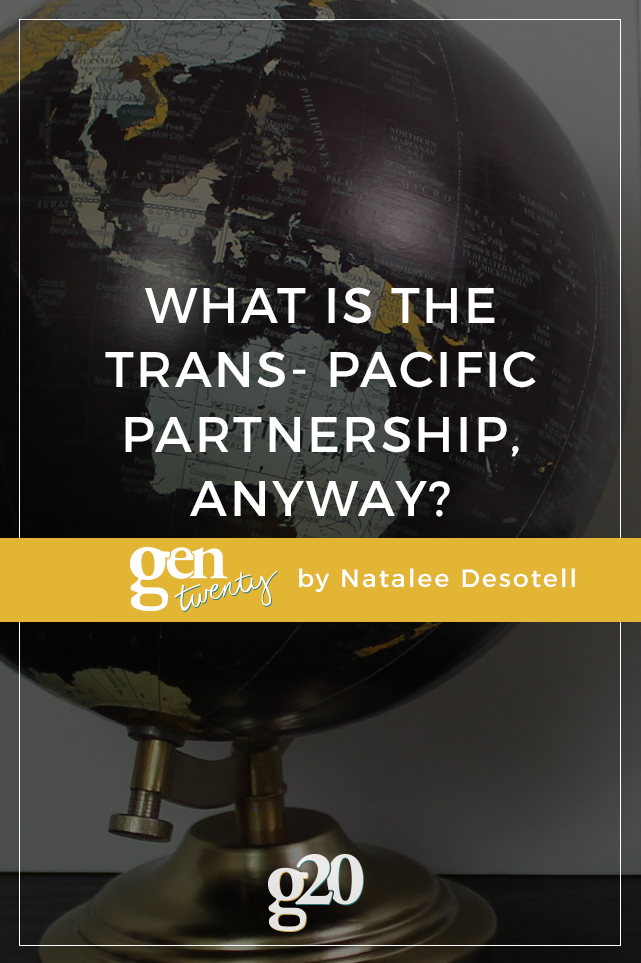
It wasn’t a surprise when Trump withdrew from the Trans-Pacific Partnership (TPP) on his first full day in the Oval Office – he had been saying it would happen for months.
The United States and 11 other Pacific Rim countries (read: countries that border the Pacific– excluding China) put pen to paper for a major trade deal after seven years of planning. President Obama signed the 5,000 page document in 2016, but the Senate had not ratified it yet by Trump’s inauguration day.
The basic idea of TPP: it would have opened trade between some of the largest economies in the world, which make up about 40 percent of the world’s total Gross Domestic Product.
To be approved, six countries or a group that makes up 85 percent or more of the combined GDP of the countries would have had to approve it. The chances are looking slim now that the United States has stepped out.
There were several reasons why the TPP would have been a great plan for the United States, and many millennials agreed.
First, the U.S. had a large hand in negotiating the provisions of the agreement, so it benefits American industries that are on the cutting-edge, including finance and technology. Innovative industries like these employ an estimated 65 percent of Americans.
Secondly, it would have removed more than 18,000 taxes, or tariffs, that have hampered American companies from selling their products in foreign countries. This would have also made it less expensive for the involved countries to buy stuff from each other. For example, it would have been cheaper to get Japan-made car parts into the U.S., making our cars more affordable.
Lastly, The TPP also includes comprehensive and specific rules about heightened environmental standards and improved labor practices.
Despite the positives, lots of (mostly white, working class) people had their reasons to dislike the TPP.
The TPP had the potential to send more manufacturing jobs abroad, hurting the working class in the United States. This is the biggest reason Trump rejected it – to stop the bleeding of jobs going overseas. “slow the tide of jobs leading the United States and to experiment with other protectionist measures before providing a leg-up to American companies seeking cheaper labor abroad”.
However, fans of the TPP posit that increasing exports and opening markets for American companies will create more jobs than Trump’s protectionist policies.
It also could have resulted in depressed wages in the United States because of cheaper labor elsewhere. Low-skilled United States residents already lose about 1,800 dollars each year because wages have been pushed down by competition overseas, according to the Economic Policy Institute. TPP would no doubt exacerbate this, potentially hurting black and Hispanic workers even more than white workers.
So what do Australia, Brunei, Canada, Chile, Japan, Malaysia, Mexico, New Zealand, Peru, Singapore, and Vietnam do with the deal now without the United States’ backing? Some countries expressed interest in continuing some type of agreement, but the overall consensus is that this can’t go ahead without the United States since a big part of the reason countries were participating in the TPP was to get access to sizable American market. The U.S. economy would have made up nearly 70 percent of the total GDP of the bloc if all countries agreed.
With the TPP option gone for the US, our trade rules remain as they have been for a couple decades under the World Trade Organization, which includes many more countries but much more basic trade rules.
[clickToTweet tweet=”Why millennials should still care about the TPP:” quote=”Why millennials should still care about the TPP:”]
Why Do We Still Care?
The decision to strike down the TPP with an executive order was a strong indicator of the direction Trump is taking our country: inwards. This stark turn away from the international economy will continue to have an impact on our economy for years. It will have an affect on our future careers, the goods we can buy, and the influence that America has on the world.
Globalization is going to march on, anyway, with or without the United States involved to shape it.
